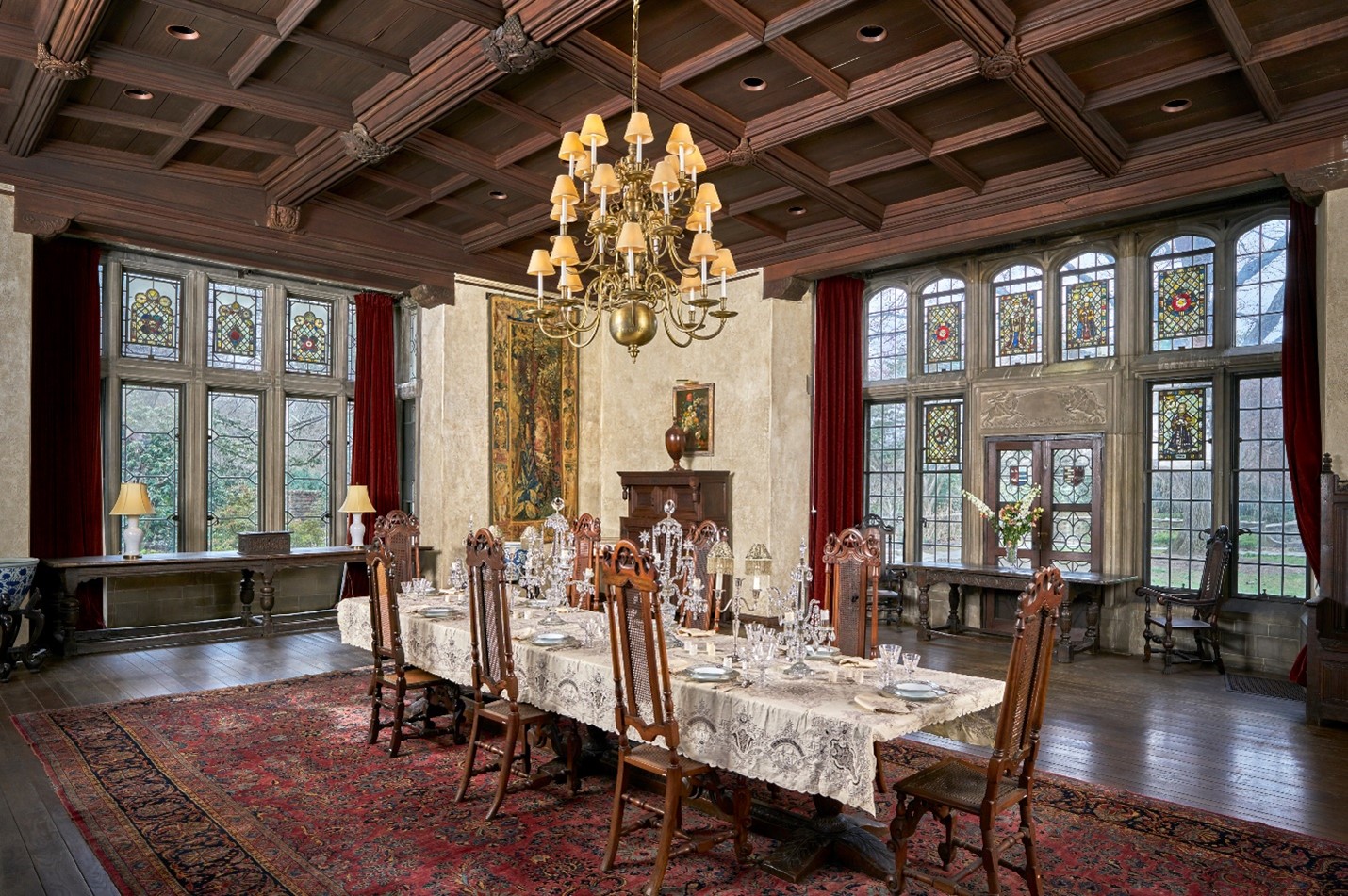As we set the table for holiday meals or special occasions, we may “dress it up” a bit with a nice tablecloth, linen napkins, favorite dishes, those champagne glasses that get brought out of storage once a year, flowers or even a themed centerpiece. One hundred years ago, when the Coes lived at Planting Fields, they, too, hosted dinner parties, enjoying the company of friends and family alongside delicious food and bottles of wine. The table around which they sat remains in Coe Hall today. It is an unusually long Elizabethan-style antique oak refectory table, designed specifically to fit the proportions of the room by architects Walker & Gillette and made by London-based antique dealers Stair & Andrew, who specialized in in early oak and 18th century walnut furniture. Adorning the table in the picture above are three asymmetrical glass candelabras with central, crescent-moon finials and tear-drop prisms. These sparklers date back to the late 18th century. Mai and W.R. Coe purchased them from Charles of London, who designed much of the interior décor of Coe Hall. According to receipts, records, and letters in the Planting Fields Archives, these candelabras had previously shimmered in Brocket Hall, a neoclassical country house built around 1760 in Hertfordshire, England. The table, chairs, and likely the candelabras almost always remained in place. The table settings, on the other hand, changed with each meal and occasion.
In July 1922, a year after Coe Hall was completed, the first edition of Emily Post’s influential book Etiquette in Society, in Business, in Politics, and at Home was published. It was such a success that the second edition was released in September of the same year. At over 600 pages long, Etiquette covers a wide array of manners and social rules, including four extensive chapters detailing everything the lady of the house would need to know to successfully host a proper meal in her home. While we cannot know for certain whether Mai Coe or Caroline Coe owned an early edition Etiquette, we can presume that as women brought up in what Mrs. Post termed “Best Society,” they would both have been deeply familiar with the customs described in its pages.[i] For instance, at the beginning of the section titled “Setting the Table,” one of fifty-five subsections that comprise Chapter Fourteen on “Formal Dinners,” Post writes:
Everything on the table must be geometrically spaced; the centerpiece in the actual center, the “places” at equal distances, and all utensils balanced;
beyond this one rule you may set your table as you choose.[ii]
Pages of rules follow this one, of course, but the required geometry would have been easy for the Coes to obey at their long, bespoke rectangular table. With plenty of elbow room between places and a short distance across the table, guests would have dined and conversed comfortably. “Consideration for the feelings of others” combined with “knowledge of the social amenities” makes for proper Postian etiquette. With their collections of silver flatware and bone china place settings for a variety of occasions, the Coes and their guests would have enjoyed meals in the “Best Society.”
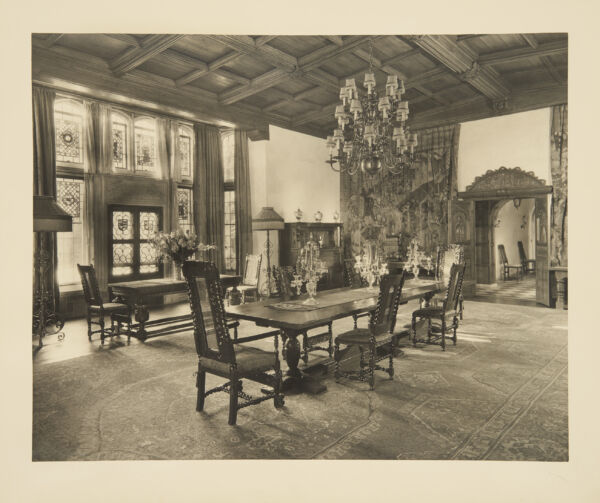
Depending on when you visit Coe Hall today, you may notice the table settings change, as they would have a century ago. The dishes on the table now are part of a 120-piece set that belonged to the Coes and were given to the Foundation by W.R. and Mai’s second son, Robert D. Coe, in 1985. They are fine bone china in a pattern called Tonquin Ruby (sometimes called Tonquin Rose), which was produced by the English pottery manufacturer Wedgwood beginning in 1930 (the pattern was discontinued in 1990) and features gold leaf and slip decoration of gold and cream lotus blossoms on an oxblood background.
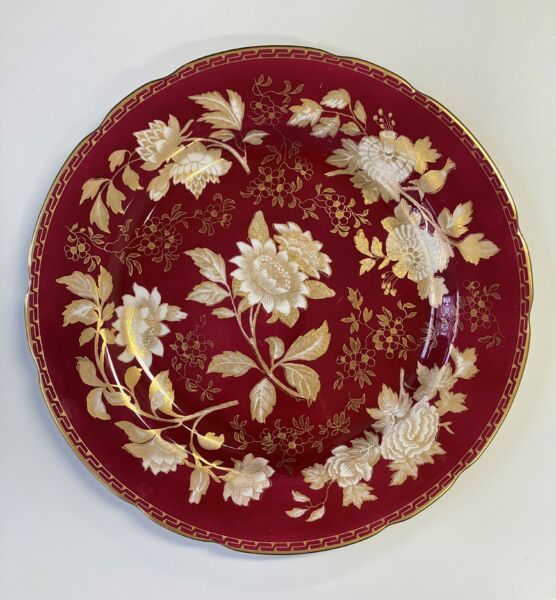
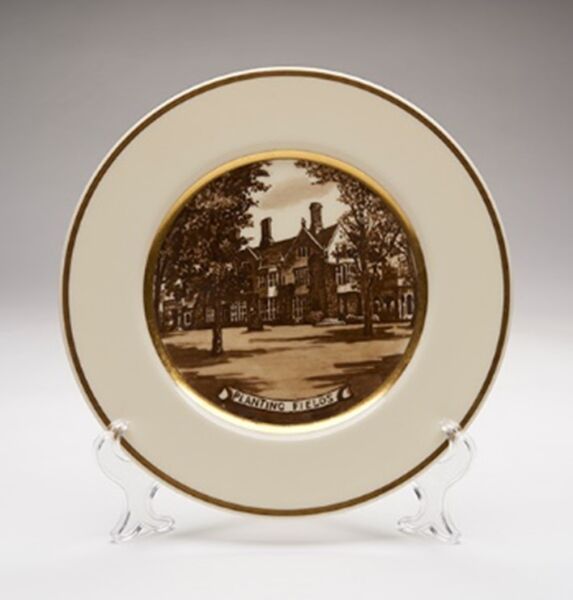
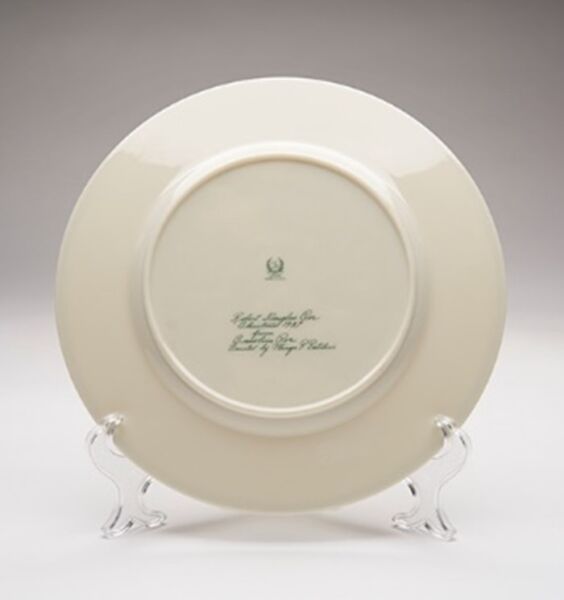
Gold details were popular on fine china in the 1920s and 1930s. Another set of particularly special dishes sometimes adorns the dining table: Lenox bone china plates hand painted by artist Minga Pope Patchin. Commissioned by Caroline Coe in 1937, the dishes were a Christmas gift from Mrs. Coe to her husband, W.R. and stepson Robert. Each plate is painted with one of six scenes from three of the Coe family’s properties: Planting Fields in Oyster Bay; Shoshone Ranch, also known as Lake Irma Lodge, in Cody, Wyoming; and what the Coes referred to as Cherokee Plantation, located outside Yemassee, South Carolina. This holiday season, even if you cannot set your table with personalized, hand-painted fine bone china, you can ensure everything on the table is “geometrically spaced” and thus dine as a member of the Best Society!
Meredith A. Brown, Director of Museum Affairs and Chief Curator
[i] Mai Huttleston Rogers Coe was married to W.R. Coe from 1900 until her death in 1924 at age 49. She built the Planting Fields we know today with her husband. Caroline Graham Slaughter Coe and W.R. Coe were married from 1926 until his death in 1955, aged 85. Caroline continued to live at Planting Fields until her death in 1960, at the age of 83.
[ii] Emily Post, Etiquette in Society, in Business, and at Home (New York and London: Funk & Wagnalls, 1922). Accessed as a free ebook: https://www.gutenberg.org/files/14314/14314-h/14314-h.htm All quotes in this above text are from this edition of Etiquette.

